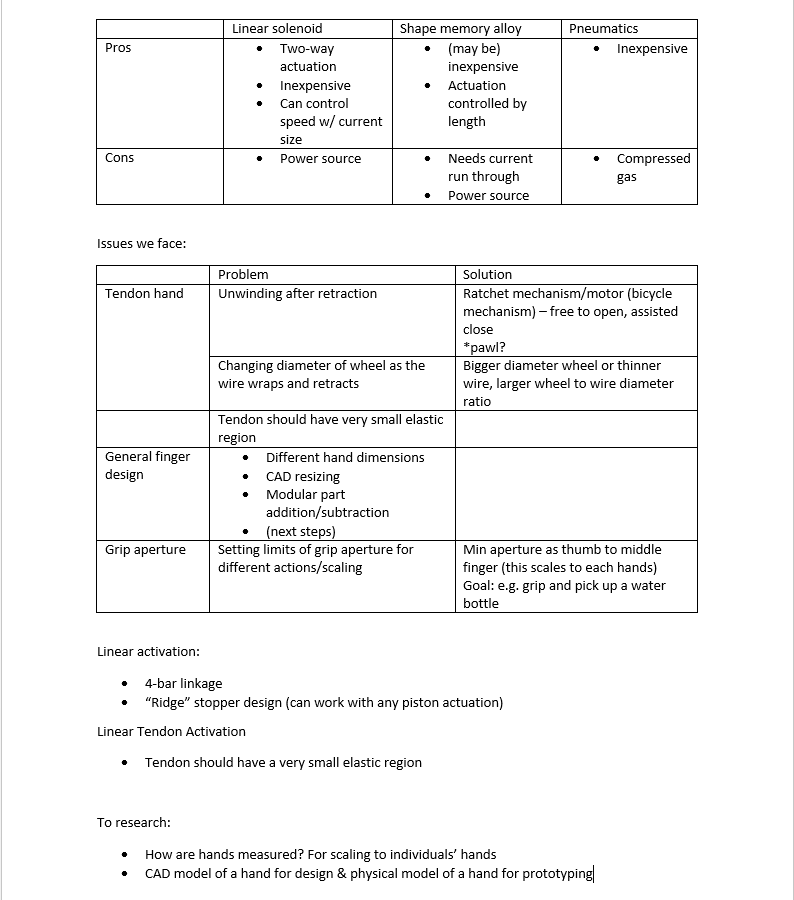The first challenge was to find the right method of actuation. Some of the actuation method that were considered were solenoids, pneumatics, hydraulics, shape memory alloys, linear actuator with 4 bar linkages, and tendons. It was very difficult to find solenoids and pneumatic or hydraulic pumps that were small but powerful enough for hand actuation. Therefore, our group’s options narrowed down to 4 bar linkages or tendons.
At first, tendons seemed more reasonable to use because of its light weight. Also, tendon is how our hands are moved naturally, therefore it seemed very intuitive to use the tendon method. However, designing a component that will organize all the wires on the palm was extremely difficult. Our major source of prototyping method is the 3-D printer and laser cutter, but a palm plate made out of those materials will be very rigid and will prevent the user’s hand to bend around an object. Also, winding up wires to control the movement is a lot more difficult than controlling a linear actuator.
Therefore, using 4 bar linkages with linear actuator was set to be the method of actuation of our choosing. For the first prototype we are building, we thought it was a good idea to choose a method that is easier to control, easier to manufacture with our given resources, and easier to design compared to the tendon method. The cons of this method is that it is bulkier and it is heavier considering the usage of a linear actuator. However, instead of trying to make a good project from the start, we thought we could instead improve our design by first designing a prototype.
Below is the chart that used to come up with our final actuation method.

 Chad Paik
Chad Paik
Discussions
Become a Hackaday.io Member
Create an account to leave a comment. Already have an account? Log In.